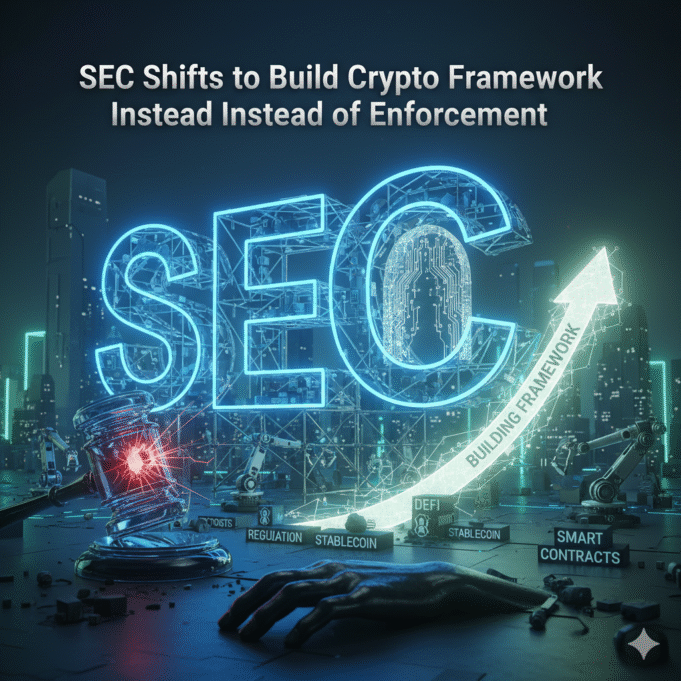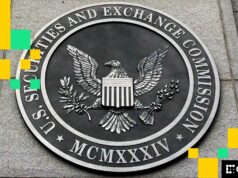The U.S. Securities and Exchange Commission just pulled off a regulatory plot twist that nobody saw coming, and it might actually be good news for the crypto industry. After years of playing crypto cop, the SEC is swapping its enforcement badge for a drafting pen, pivoting toward building a coherent framework instead of playing regulatory whack-a-mole. This shift signals something unprecedented: the government is finally ready to have an adult conversation about digital assets.
SEC Shifts to Build Crypto Framework Instead of Enforcement
This isn’t happening in a vacuum. The SEC’s pivot is part of a broader initiative called Project Crypto, which aims to fundamentally modernize how securities rules apply to blockchain technology. The goal? Enable the U.S. market to actually migrate to blockchain infrastructure while maintaining investor protections. Revolutionary? Possibly. Overdue? Absolutely.
The priorities here are refreshingly specific: establish clear guidelines on what constitutes a security in the crypto space, allow entrepreneurs to raise capital on-chain without perpetual legal anxiety, and permit trading platforms to operate as genuine “super apps” offering trading, staking, and lending services under a unified regulatory umbrella. According to Atkins’ philosophy, regulation should deliver the “minimum effective dose” needed to protect investors—no regulatory overkill, just smart guardrails.
Meanwhile, the President’s Task Force on Digital Asset Markets released recommendations supporting exactly this approach. The message from Washington is finally coherent: we’re not trying to kill crypto; we’re trying to integrate it responsibly. That’s a seismic shift from the “regulate through litigation” era that dominated the past few years.
The Global Crypto Race: Why America Can’t Afford to Lag
Here’s what really matters: the SEC’s transformation isn’t purely altruistic. It’s strategic. The European Union just implemented MiCA (Markets in Crypto-Assets Regulation), creating a comprehensive framework that’s already attracting digital asset companies. Singapore, Switzerland, and other jurisdictions are building crypto-friendly ecosystems. Meanwhile, America was essentially telling innovators to take their talents and capital elsewhere—which many did.
The United States is essentially playing catch-up in a game where monetary sovereignty in the digital age hangs in the balance. A crypto-dollar hegemony anchored by strategic Bitcoin reserves and U.S. dollar stablecoins represents America’s answer to global financial digitalization. Without competitive regulatory clarity, that vision crumbles. The SEC’s shift acknowledges a hard truth: innovation will happen with or without American participation. Better to shape it than watch it happen somewhere else.
The Road Ahead: Opportunity Meets Obstacles
Of course, the SEC’s good intentions face real-world friction. Government shutdowns, congressional gridlock, and unpaid federal employees create practical headwinds. The recent XRP lawsuit—which triggered a 30% price collapse—shows how enforcement actions can still roil markets even as leadership signals a new direction. The gap between policy intention and operational reality remains substantial.
But if the SEC successfully accelerates the “Crypto Plan” and “Innovation Exemption” framework once funding stabilizes, expect a genuine inflection point. Tokenized stocks, prediction markets, and early-stage token offerings could finally flourish. Crypto talent and companies that fled American regulation might actually consider returning. That’s not just regulatory theater—that’s competitive advantage.
What Comes Next: Your Move
The crypto industry now faces a critical window. For the next few months, pay close attention to how quickly the SEC advances these initiatives post-shutdown. Monitor the development of the Innovation Exemption program and Project Crypto’s implementation timeline.
If you’re building in this space, this is your moment to engage constructively with regulators who are finally listening. The regulatory landscape is shifting beneath our feet—the question is whether you’ll be ready when it settles.





